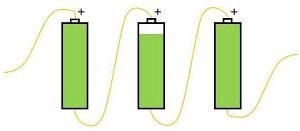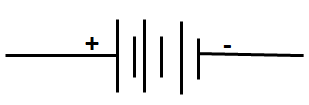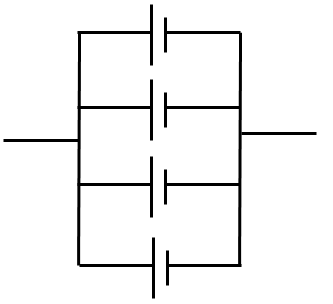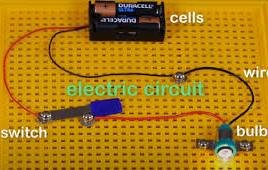In current electricity, the term arrangement of cells refers to how individual electro-chemical cells are connected in an electrical circuit. These cells can be arranged in series or parallel:
Series Arrangement of cells
Cells are said to be in series arrangement when positive terminal of one cell is connected to the negative terminal of the next cell. When two or more cells are connected in series, they makes a battery. The figure below shows dry cells in series arrangement.

The cells in the figure below are also in series arrangement.

The circuit diagram below represents three cells in series arrangement:

Effects of series arrangement on current and e.m.f
consider the circuit below:

The ammeter reading in circuit (b) is higher than in circuit (a). The voltmeter reading is also higher in circuit (b) compared to that in circuit (a).
Bulb in circuit (b) lights more brightly than the one in (a). This brings us to conclusion that there is more electrical energy for when more series are arranged in series. Connecting cells in series increases their e.m.f in the circuit and consequently increasing current flowing in the circuit. Later we will see that current flowing is directly proportional to the potential difference driving the current.
If we connect n identical cells in series with each having voltage of k volts, then the total e.m.f from the combination will be nk volts.
please note that, if a cell is removed from the arrangement, the circuit will be broken.
Example 1
Four identical cells each with an e.m.f of 1.5 V are connected in series . What is their effective total e.m.f due to that connection?
solution
The total e.m.f of the cells in series connection is the sum of their individual e.m.fs. Hence
Total e.m.f = 1.5V +1.5V+1.5V+1.5V = 4(1.5V) = 6.0 V
Example 2
Three cells with e.m.f 3.0V, 2.0V and 1.8 V are connected in series. What is the resultant effective e.m.f due to the combination.
solution
Total e.m.f for cells in series = sum of individual cell e.m.f
Total e.m.f = =3.0 V + 2.0 V + 1.8 V = 6.8 V
Arrangement of cells in parallel
Cells are in parallel arrangement when all their negative terminals connect to the negative terminals of the other cells. Additionally, all the positive terminals connect to the positive terminals of other cells.
The figure below shows cells arranged in parallel.

As one can see from the diagram, all the negative terminals are connected together. Similarly, all the negative terminals of the cells are connected together.
The figure below shows the circuit diagram for the cell arrangement in parallel as in figure above.

Effect of parallel arrangement of cells on current and e.m.f
consider the circuit below where three cells are arranged in parallel.

Suppose you record the current flowing and note the brightness of the bulb. When you add more cells in parallel, the brightness of the bulb is observed to remain the same. Also, no significant change observed on ammeter reading. The voltmeter reading also remains the same.
When identical cells are arranged in parallel, the total resultant e.m.f of the combination is of equal magnitude to that of a single cell. Adding or removing cells in parallel does not change the e.m.f. in the circuit. Disconnecting a cell from the parallel combination does not break the circuit. The other cells continue providing potential difference as if they are a single cell.
Cells should be arranged in parallel when they have identical e.m.fs. When cells are not identical, the cell with lower voltage will drain the one at higher voltage. This happens because current flows from the battery at high potential to the one at low potential. As a result, electrical energy is consumed unnecessarily.
Cells in parallel arrangement supplies current for much longer time than the cells in series. This is because they use energy of a single cell each at a time.


Leave a Reply